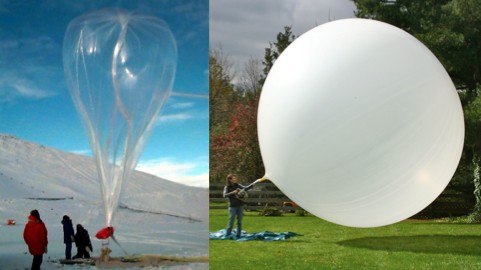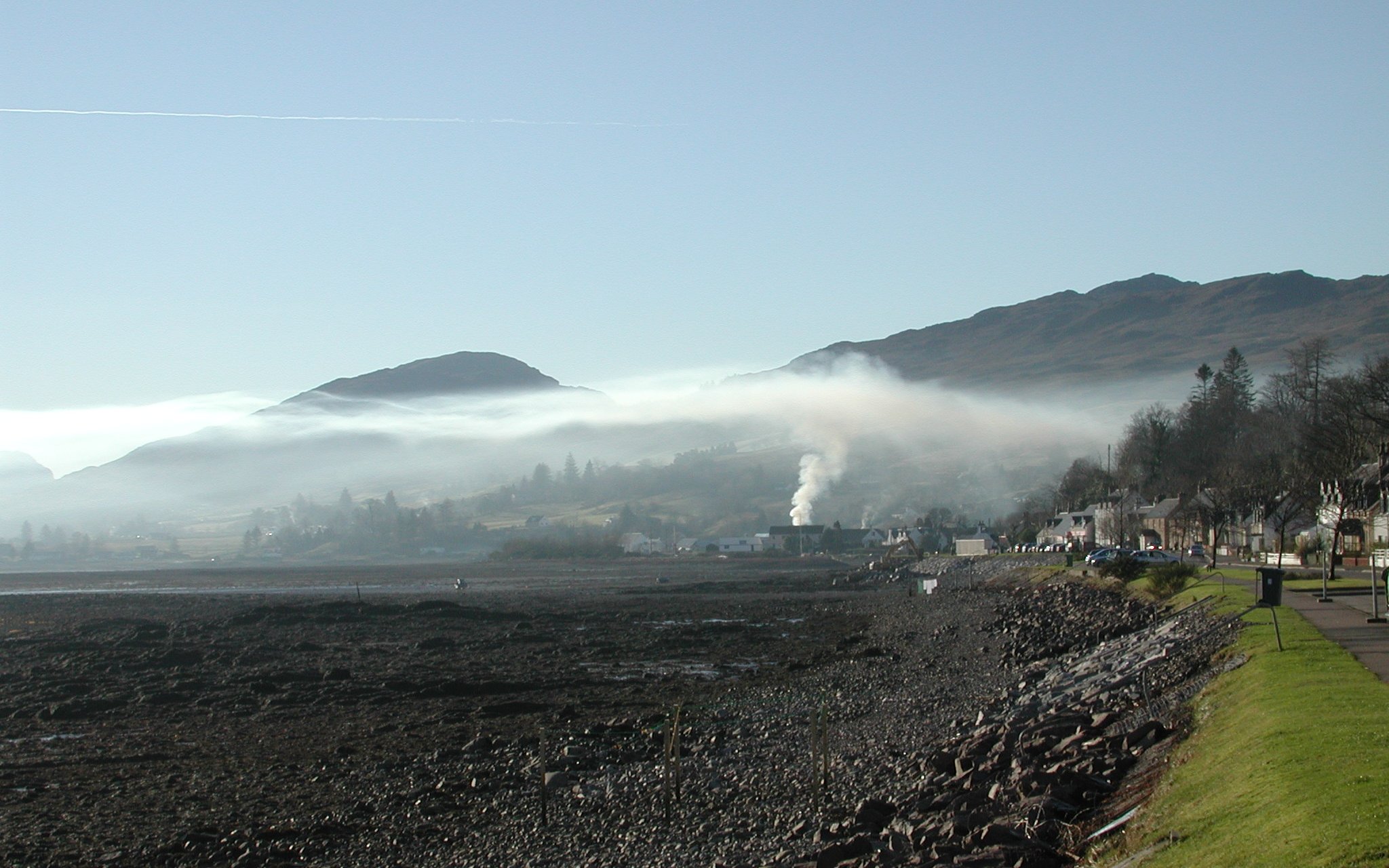Physicist: Beautiful question!
The short answer is that if you have a warm bubble of air it will rise, but as it does it’ll expand in the lower pressure environment, which causes it to cool.

Weather balloons are intentionally under-filled on the ground so that when they’re at altitude they’ll be the right size. Shown here are professional weather scientists (left) and other (right).
If you’re not familiar with the ideal gas law (compression heats, expanding cools), then here’s a better way to think about it. Gases (which includes air) can be though of as a hell of a lot of perfectly bouncy rubber balls. Each molecule is ricocheting very fast between other molecules and the ground. But, like anything that moves, when they move upward they slow down.

Air molecules are like rubber balls. They move faster when lower and slower when higher. Air not shown.
This random movement is what we in the biz’ call “heat energy”. Heat is literally just the random motion of atoms. When an air molecule is close to the ground it’s moving pretty fast, but if it has a chance to bounce higher, then it will slow down during the trip. When it’s a little higher, all of the other air molecules around will have had similar experiences and will also be moving a little slower. Slower motion = lower temperature.
You can extend this a bit and say that air near the surface of the Earth is moving about as fast as it would be if it had been dropped from the top of the atmosphere (ignoring air resistance, ironically), which is about half a kilometer per second at room temperature. This is a little ballpark, because the atmosphere is more complicated than air just being stacked up.
When a ball or air molecules are bouncing, they exchange “kinetic energy” for “gravitational potential energy“, but overall the total energy stays the same. So air actually maintains the same amount of total energy regardless of height, it’s just a question of how much of that energy is tied up in gravitational potential (being up high) or kinetic energy (moving fast). When a vertical column of air has the same amount of energy, then “bubbles” of air are free to move up and down, and those bubbles will have the same temperature of the surrounding air when they arrive.

An inversion layer, where the temperature suddenly increases as you go up, stops air from mixing properly.
However, sometimes this isn’t the case. Temperature drops as you go up, but hot air still rises through cold air. If you’re moving upward and find that suddenly the temperature increases (instead of slowly decreasing), then you’ve hit an “inversion layer“. This happens a lot in valleys and canyons. The warmer layer has more energy than the colder layer just beneath it (so it’s hotter and lighter), and this stops the air layers from mixing. The cooler air doesn’t have the extra energy needed to rise through the warmer air above it, so the air layers stack up like oil on water. Since the layers are just sitting on top of each other, they’re free to behave very differently. If you’ve ever been outside and seen clouds at different altitudes moving at different speeds or different directions, then you’re probably looking at clouds separated by an inversion layer or two.
The rubber ball picture is from an over-the-top ad, that can be found here.







If the world should come to an end, that means it will stop rotating along it axis. And by this time, some energy will have been lost. How can one calculate the energy lost.
heat rises so therefore i dont i know what im talking about
how much time does hot air takes to rise?
If hot air rises why is the temperature lower at higher elevations (altitudes)?
This question is easily answered by the laws of physics.
It was recently discovered that anytime a physicist speaks hot air is produced; coincidentally, as this hot air rises it cools at a standard lapse rate of about 3 degrees Fahrenheit per every thousand feet, because of the cooling effect the gaseous state condenses and liquefies into cow manure, after 24 hours it then solidifies and is pulled back to Earth by gravitational force at the accelerated rate of 32 ft/sec. until it reaches a terminal velocity of about 120 ft/sec. where the rate of fall remains constant, as the mass of manure impacts the Earth’s surface, it eventually piles-up around the observer to an elevated height of approximately 2 ft. (knee deep).
I hope this answers your question!
If you have a room that is 25 degrees (bit too warm) and you have a ceiling with lots of pipes with cold wAter in them at say 20 degrees will the cold air above float down
Is it really correct to define molecules as losing intrinsic energy due to heights? Converting it into a coin of ‘potential energy’, relatively some arbitrarily set ground level? Doesn’t it have to do with their kinetic energy, ‘jiggling’, and their probabilities of bumping into another molecule, depending on elevation? Or do you mean that the molecule really stops its jiggling because of a conversion into potential energy, which only will be measurable as a relation between the ground and that ‘ball’ hitting it. It’s a very strange concept as you won’t find that ‘potential energy’ expressing itself in either of the participants, only as you treat it as a ‘system’ consisting of both.
Why does the hot air that is the lighter air always rise
above?
Don’t really know
The thing is, we assume that things with more energy will rise, or ‘fight’ against a greater, more dense atmosphere aka molecules. What we build this assumption on is statistics. And they can’t lie But the assumption lacks.
when air heats up it expands. when it expands its density decreases with respect to the cooler air around it. therefore it will rise until it reaches a layer with the same density.
God bless U all. Great science comments. But God is science. So therefore we must understand God in order to understand the evolution of hot and cold warm and cool. But great response. Thanks. Peace